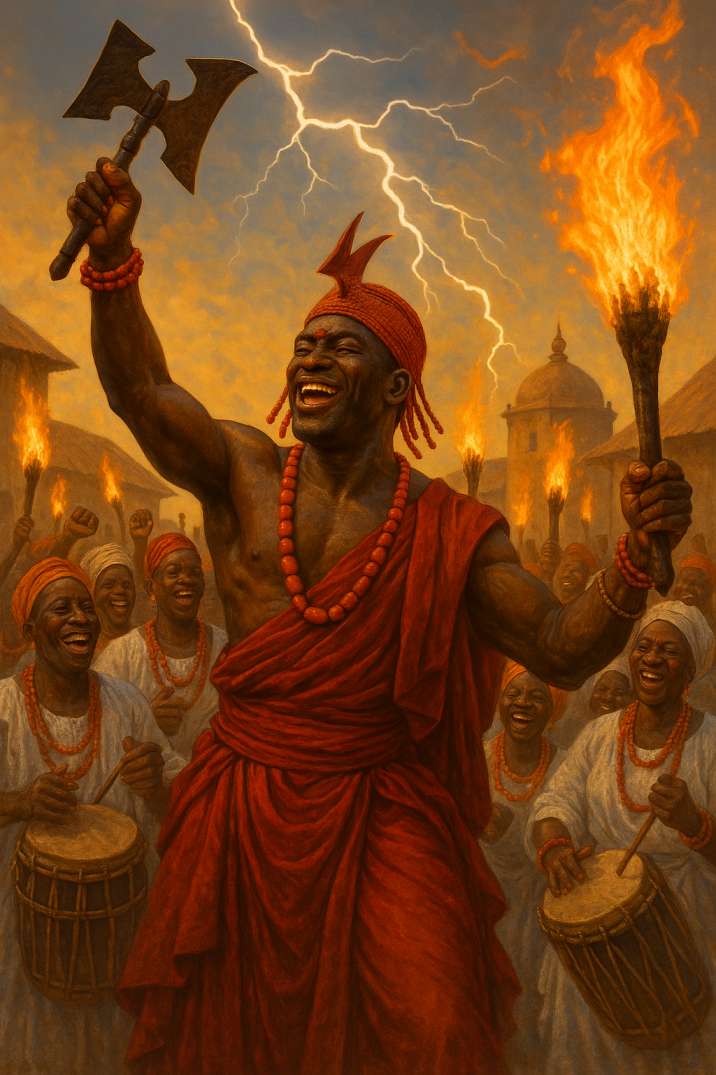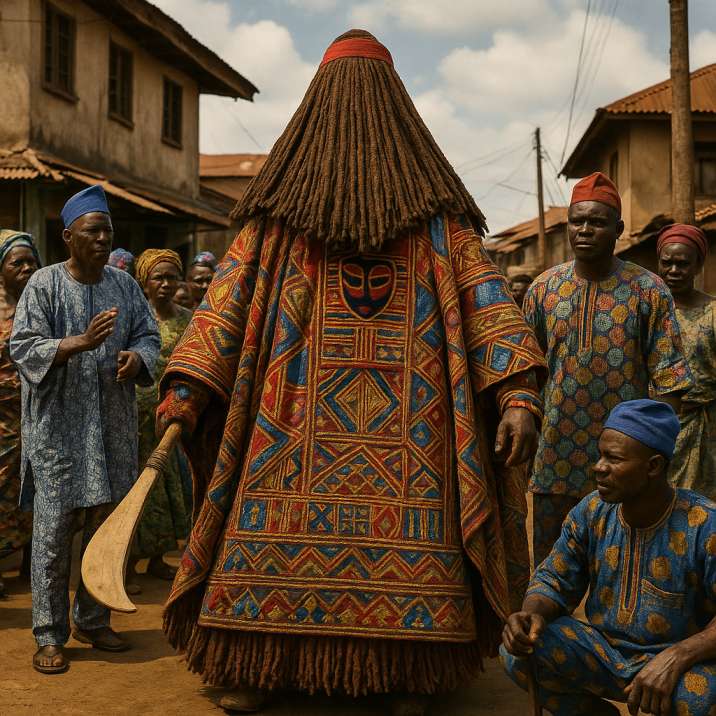Among the Yoruba people, few deities strike as much awe and reverence as Sango, the god of thunder. Every year, in the ancient city of Oyo, the World Sango festival is celebrated with booming drums and blazing torches. The festival is celebrated in honour of Sango, the powerful Orisha of lightning and justice, who was once the third Alaafin of the Oyo empire. He wasn’t always a god. He lived as a mortal, succeeded his brother, Ajaka, to become king, and ruled with fierceness and charisma. His anger, on the other hand, was not to be trifled with. Legend has it that he has supernatural control of thunder and fire. When he is angry, even the skies cannot bear his might, and thunder and lightning follow. He became a deity after his unexplained death, and followers began vying for his protection and blessings.
The Sango Festival dates back centuries and is held primarily in Oyo town. It starts with Iwure Agba, that is, prayers of the elders, carried out by the Sango priest or Aare Sango. The priest chants incantations and offers sacrifices to invoke his spirit. Offerings include dishes of amala, Sango’s sacred food, kola nuts, bitter kola, live cocks, and rams. The festival is also characterised by feasting and sharing food among worshippers and visitors. After this, the Sango priests and worshippers make their way to the king’s palace. The king, however, must not see the Sango priest because it is believed that he can’t see Sango, his ancestor, face-to-face. The priest offers prayers for the community before the procession makes its way into town amidst pomp and pageantry.
Sango followers don’t joke with the festival. They plait their hair, dress in red garments, and adorn their bodies with beads and cowries. They also carry with them a double battle axe, known as the Ose. During the festival, the town comes alive with intense drumming and dancing. The bata drums, which are Sango’s favourite, are played. Chants and incantations echo through the street, creating an atmosphere filled with energy. There is also the grand procession, characterised by devotees performing around town and spitting fire to mimic the fury of the thunder god. Masquerades also come out to play during the festival. They dance and perform around town, adding colour to the celebration. Some of them enter into a trance-like state. It is believed that they are possessed by Sango. The festival includes events like Ogun Ajobo and Oya Day.
It is usually held in August, around the Alaafin of Oyo’s palace. It lasts for about 10 days and is watched in many countries around the world. With visitors from Brazil, Trinidad, and the United States (where the Yoruba religion has taken root), the Sango Festival, renamed as the World Sango Festival, strengthens ties between the African continent and its diaspora.
To witness the Sango Festival is to step into a living history book, where one connects with ancestral roots. Highlights from previous years’ festivals include the Eyo masquerade parade and exhibition of arts and crafts by envoys from various countries. No doubt, attending the Sango Festival is an unforgettable experience. So, when next August comes around, and you hear the sound of bata drums rolling across the skies of Oyo, remember: Sango has returned. The thunder is speaking. And the people are listening.
Written by: Oluwadamilola Oke



